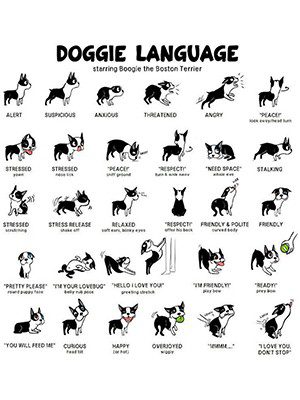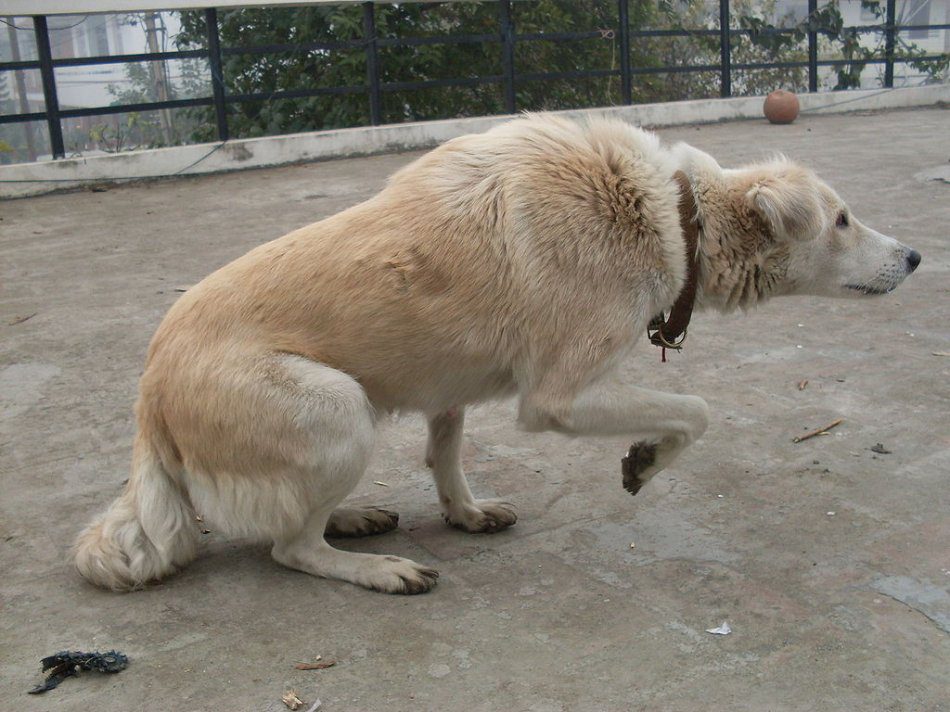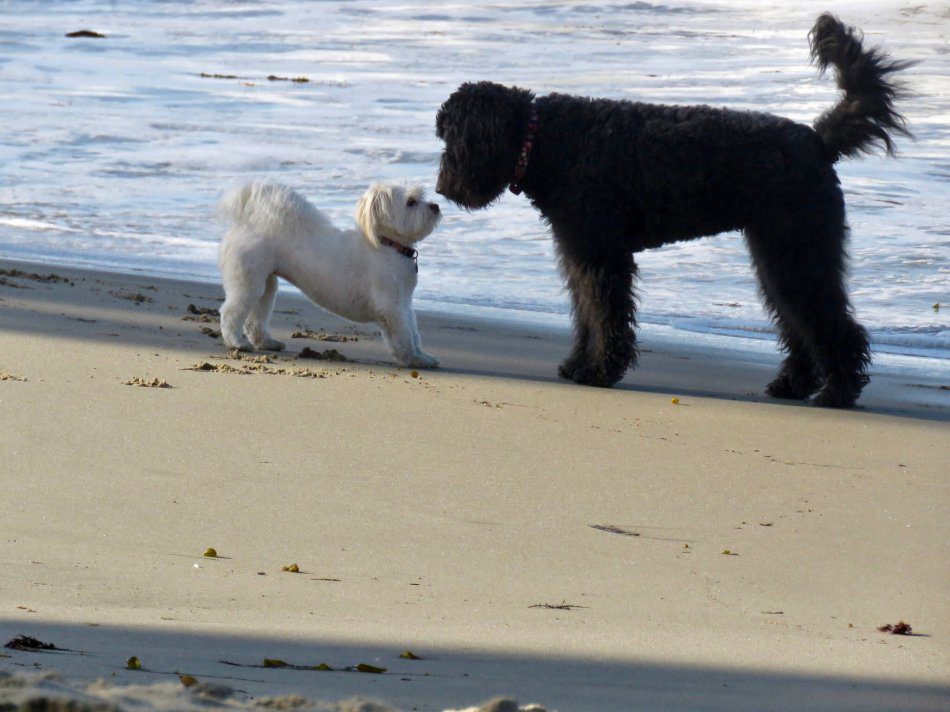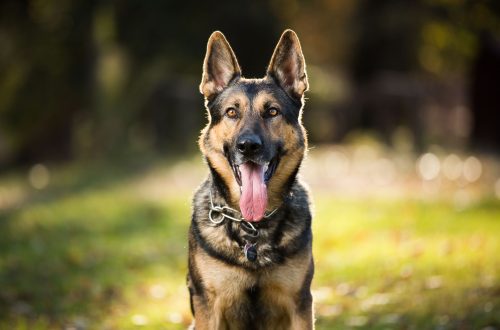
How do dogs communicate and what can they “tell” us?
I think everyone who has ever interacted with dogs will agree that it is very important to understand these animals. After all, understanding is the key to successful relationships and a happy life with a dog. How do dogs communicate with each other and with us, and what can they “tell” us?


Photo: wikimedia.org
How do dogs communicate with each other and with people?
In communicating with relatives and people, dogs use four main ways:
- Acoustic. Dogs whine, bark, howl, squeal, squeak, growl, and make other sounds. Moreover, barking, for example, can also differ in different situations. For example, barking to attract attention is one thing, and when protecting the territory, it is completely different. With the help of howling, the ancestors of dogs marked the boundaries of the territory, tuned in to each other before a joint hunt, and transmitted information at a distance. A growl can be both a manifestation of aggression, and a warning, and a game growl. When a dog is whining, it may be in pain or discomfort, or it may be overexcited, feeling lonely, or impatient. A sharp squeal or squeak is a signal that the dog is in pain, as well as an attempt to block aggression from another animal or person.
- Visual. These are different signals from the arsenal of dog body language: movements of the head, tail and ears, postures, “raising” of hair, etc.
- Tactile. Dogs communicate through touch, which is why early handling and grooming is so important to them – and no, it has nothing to do with shows. Early handling means that a puppy is picked up from birth and accustomed to different touches, stroking, scratching. If there is little tactile communication, socialization suffers.
- Chemocommunication – the use of scents. With the help of smells, dogs mark the territory, look for sexual partners and, in general, tell their relatives about themselves. This is a kind of questionnaire from which you can find out the sex of the animal, age, approximate size, readiness for procreation and health status.




What can a dog tell us?
First of all, in communication with relatives and people, dogs show different emotions. And understanding what emotions a dog is experiencing gives us an idea of what he is going to do.
What emotions does the dog express?
- Pleasure and tranquility. The dog has a relaxed, and sometimes slightly open mouth, a soft look, relaxed ears and tail. If the dog is resting, the eyes may be squinted. The body as a whole is not tense.
- interest, curiosity. The head is slightly tilted, the ears stand erect or slightly forward, the mouth is closed or slightly open, the eyes are open, the tail is relaxed, but extended horizontally, sometimes wagging slightly.
- Nervousness, discomfort. The dog looks to the side, sometimes the whites of the eyes are visible, the ears are pressed or slightly lowered, the lips may be slightly raised. The dog can yawn or lick, sniff the ground, scratch, shake off.
- Fear. The ears are pressed, the mouth is closed and tense, the tail is tucked in. The dog breathes heavily, sometimes rolls over on its back (while keeping the tail between the legs), bends its paws or raises its front paw, sometimes freezes.
- Aggression. The dog’s eyes are wide open, the gaze is fixed on the object of aggression, the corners of the mouth are taut, the ears are directed forward, raised or slightly apart, the tail is tense, the hair is raised at the withers. The dog bares his teeth, freezes for a short time with the body directed forward, and emits a low growl.
- Pain. The dog may grumble, squeal or whine, lick a sore spot or bend its paw, the posture and gait change, movements become different. Pain also affects behavior: the dog may become lethargic or irritable, restless or aggressive for no reason, messing up the house or “stubborn” (for example, refusing to put his head in the collar).




Photo: pixabay.com
The ability to decipher the signals of the body language of dogs is the key to safe and comfortable communication with a pet, so do not neglect to study it.







